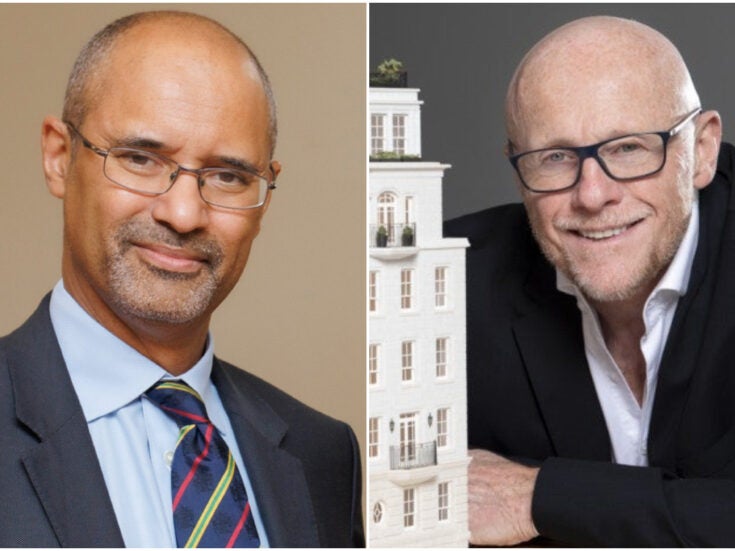
Back in June, I attended the inaugural dinner for the relaunch of London’s Blue Plaque Scheme. Plans to restructure English Heritage (splitting it into two organisations) will require increased private funding and the Blue Plaques scheme is a good example of the sort of private and corporate philanthropy funding venture that English Heritage will increasingly rely on for its survival.
As English Heritage CEO Simon Thurley explained in Spear’s when I interviewed him last summer, there are plans to split the nation’s statutory heritage body into two distinct organisations with the old English Heritage – that advises the government and developers on heritage and planning matters – being renamed ‘Historic England’. The other part, which looks after Stonehenge and more than 420 other sites as well as the Blue Plaques Scheme, would still be called English Heritage and would become a self-supporting charity – in line with other cultural bodies and organisations.
It has always been a much tougher challenge to raise money for heritage philanthropy versus some other art or conservation causes. This is because there is a Geneva Convention of the cultural world that somehow decrees that paintings – such as Philip Mould’s last Van Dyck self-portrait that won the Spear’s ‘Masterpiece of Masterpiece’ prize two years ago – are somehow in more need of being ‘saved’ than crumbling buildings or schemes such as the Blue Plaques Scheme.
The truth – as Simon Thurley eloquently points out – is that paintings that are exported abroad (often to a museum where they remain on public view) are not actually burnt or destroyed when they are so called ‘lost’ to the nation. Yet when a heritage site, landmark or building is demolished or neglected to the point of ruin, it is lost – for ever.

Pictured above: English Heritage CEO Simon Thurley
The Blue Plaque scheme is one of English Heritage’s flagship cultural and historic schemes. Being the first of its type in the world, the Blue Plaque scheme celebrating the cultural and artistic heritage of London. Unlike most honour schemes, you cannot buy yourself into the ranks of those honoured for their achievements.
At the heart of the success of the scheme is the integrity and expertise of the Blue Plaque committee. To ensure it continues to be run with the sort of rigour that the scheme is renowned, the dinner helped raised over £100,000 with a rousing speech by the new head of English Heritage Sir Laurie Magnus held at Bishopsgate in London, just a few hundred years from our Spear’s HQ. The dinner was hosted by financier and entrepreneur Luke Johnson, who contributed to the very first issue of Spear’s back in 2006.
The dinner was a great success with an excellent speech from the new English Heritage chairman Sir Laurie Magnus and the programme thanking such new corporate sponsors as Mishcon de Reya, with my friend Sandra Davis being one of the generous corporate benefactors backing the scheme. Another private generous heritage philanthropist backing the scheme is Crispin Odey whose firm Odey Asset Management also helps sponsor the Historic Houses Association. Such support is critical, along with that supplied by philanthropist David Pearl.
In the taxi home after the dinner (with all guests receiving a mug with a Sir Christopher Wren Blue Plaque to commemorate the dinner), I turned to my wife Laura and remarked how much I had enjoyed talking with one of the committee members Professor Lisa Tickner, who is a Visiting Professor at the Courtauld Institute.

Pictured above: Poet Sir John Betjeman’s plaque in Highgate
Being one of England’s most eminent art and cultural academics, she is typical of the sort of expert that has long characterised the distinguished Blue Plaques Panel. Professor Tickner has a highly specialised knowledge of the London at world from 1880 to today. Her qualifications and publications speak for themselves. In 1996-7 she gave the Paul Mellon Lectures in British Art at the National Gallery, London, and at the Yale Center for British Art in New Haven, Connecticut. She is a Fellow of the British Academy in 2008, and has been a Trustee of the Art Fund since 2010. Until I sat next to her I did not realise quite how seriously the task of awarding the new plaques was taken. The Blue Plaques Panel suddenly made the Nobel Prize committee work seem like slouches.
There was absolutely no hint from my dinner conversation with Professor Tickner that there was any mutiny brewing on the committee; or that there had recently been a panel blood bath. A few days later, I was surprised to read in The Telegraph and Daily Mail about the mutiny – preceding the dinner – within the committee of the Blue Plaques scheme. Several members had resigned before the dinner, complaining that the new make up of the committee was made up of too many all white ‘telly men’ as well as – God forbid! – a former banker and philanthropist such as Rupert Hambro.
While regrettable publicity, I do not think the media have properly grasped the real issues behind the controversy. As a modest financial supporter of the scheme, I can only say that I personally entirely welcome making the panel made up of a broader church of public individuals and not confined to a purely academic clique who may feel threatened by anybody who has actually achieved anything outside their cloistered and inward looking circle.
The idea that appointing somebody to the panel as erudite, clever and dynamic as my good friend Philip Mould OBE is somehow a ‘dumbing down’ of the panel just because he is a highly successful broadcaster and eminent art scholar who happens to be English fills me with grim horror. Philip (who won our ‘Masterpiece of Masterpiece’ piece for the second time this year with his Romney portrait of Lady Hamilton) is exactly the sort of scholar and public figure who should be appointed to the panel without so much as an eye-lash being raised.
Pictured above: Crispin Odey of Odey Asset Management
It is the worst sort of reverse intellectual snobbery to try and undermine the credibility of Rupert Hambro simply on the basis that he happens to have a background in finance as a member of one of Britain’s most distinguished and oldest philanthropic families – giving huge amounts of money to such heritage causes as a new roof for St James’s Church, Piccadilly, in addition to his father generously supporting the idea of ‘affordable housing’ (via The Peabody Trust) before social housing became politically fashionable with both left and right.
The cultural and artistic life of London over the last five centuries has largely depended on the philanthropy of financial figures, and London’s position as a vibrant cultural and global capital has probably more to do with its financial and trading achievements – dating back to the 16th century when London was (as now) one of the world’s most important trading and financial capital.
Because of the left leaning academic bias that often exists in worthy art Establishment panels such as the Blue Plaque Panel (when it was funded purely by the government) there have historically been too few eminent London bankers and financiers represented by the scheme and I entirely welcome a figure like Rupert Hambro being on the panel to give a voice to the candidature of notable financial figures – as opposed to some of the highly obscure figures who have been nominated, often on grounds of their very obscurity.
I suspect that Rupert Hambro will turn out to be an inspired choice who will show up to panel meetings. (Resigning member Gillian Darley told the Daily Mail about Bonnie Greer that ‘her attendance record hasn’t been very good. I’ve met her. Once.’) Darley has spoken out about how appalled she is that all the new members of the panel are ‘over 60’. The last time I checked, Philip Mould was only 53.
It looks as if there are certain unspoken tensions lurking behind the controversy over the media pundits. My own theory is that there is nothing that brings out the worst sort of jealousy and squabbling in academic circles than a fellow academic or writer who dares to pursue any sort of television career. Yet this is absurd. For a start English Heritage’s own CEO Simon Thurley is both a highly respected academic and a distinguished broadcaster in the Sir Kenneth Clark mould.
Indeed the TV career of the art scholar and writer Lord Clark, who presented the famous 1969 BBC series Civilisation, is the perfect foil to critics who think that academic achievement and presenting television programmes cannot go together. As an English Heritage insider told me: ‘We do not believe that intellectual credibility and a media profile are mutually exclusive.’
Before presenting the landmark Civilisation series for the BBC, Clark was actually chairman of ITV and spent years presenting programmes on art, culture and history for the general public (‘the masses’ as he would probably have described them) . He believed passionately that television should be a learning tool for everybody and not just a platform for the elitist high cultural priests of the BBC. This is all made clear in the brilliant new Tate Britain exhibition about Sir Kenneth Clark’s life as a British cultural icon.
I do think critics may have a point, however, in drawing attention to the number of men on the Blue Plaques panel vis-à-vis women. Eleven men to one woman is perhaps a balance that needs correcting. In response to this criticism, English Heritage say they are in the process of appointing new members and that ‘the panel has always featured female experts and we will ensure that this remains the case’.
The really important point about the scheme is not so much the academic mutiny but rather that public nominations has now re-opened. Although not everybody is in a position to be as generous a supporter of the scheme as the likes of Crispin, Sandra and (most recently) Nadja Swarovski of the global jewellery firm, the other critical way the public can sport the scheme is by making their own nominations. Such nominations remain the heart blood of the scheme.
People often think the expert panel put together a shortlist of people – who need to have been dead for 20 years – who gets the plaques. But this is not the case. ‘The role of the Blue Plaques Panel is not to suggest names for plaques,’ says a senior executive at English Heritage. ‘That is open to absolutely any member of the public, irrespective of age, ethnicity or academic status. The job of the panel is to decide, collectively, which of those nominations – within a small number determined by resources as well as reputation -are worthy of commemoration.’
At a time when David Cameron is padding out his Cabinet with new women for PR purposes, it is refreshing to hear that English Heritage are not going to subscribe to gender based academic tokenism. Yes, there probably will be some additional female panel members. But they will be invited onto the panel not simply because they are women – as Cameron has shamelessly done – but because they deserve to be on the panel through their own academic merit.






